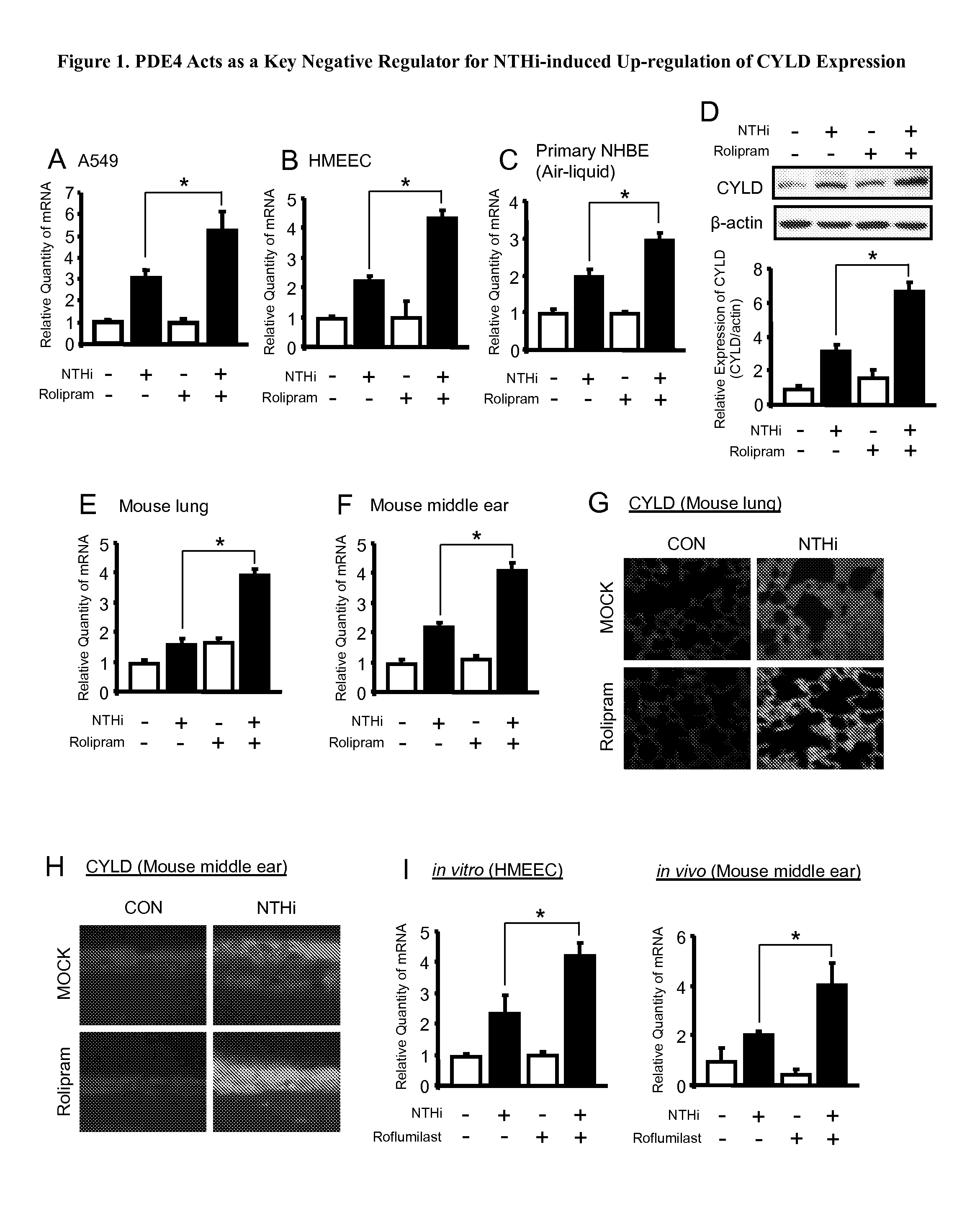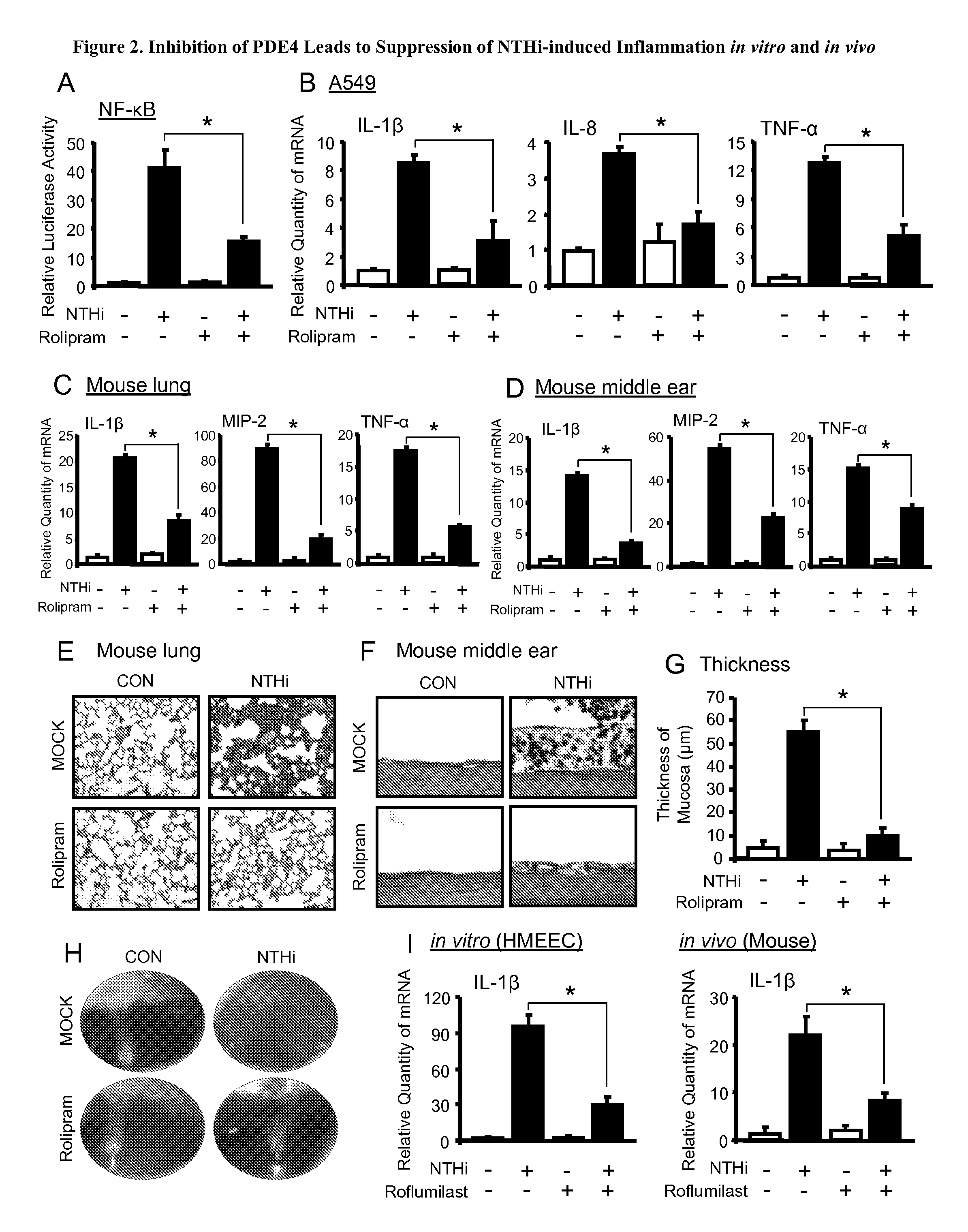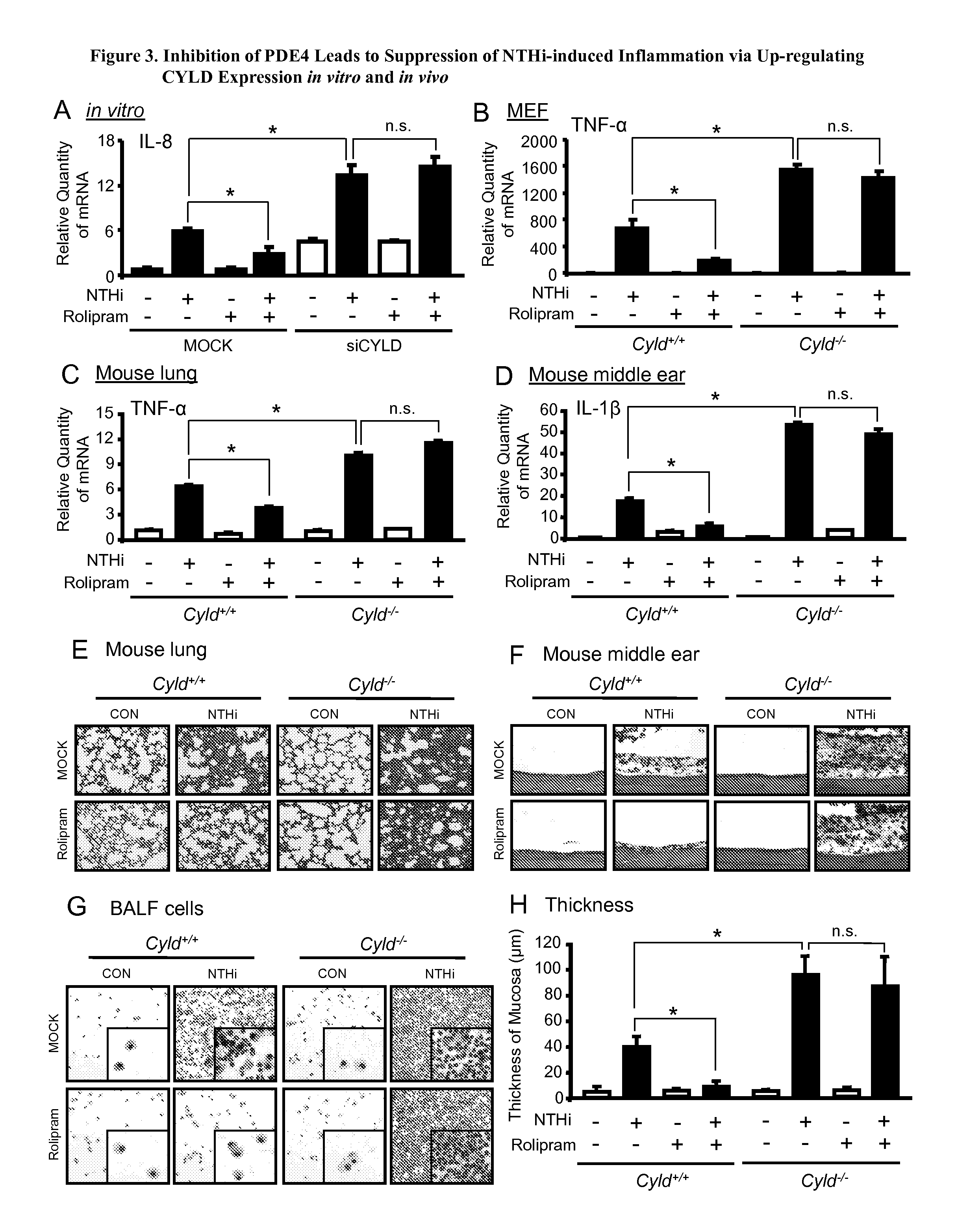Compositions and methods for treating otitis media and other conditions with inhibitors of cyld
a technology of cyld and otitis media, which is applied in the direction of drug compositions, peptidases, enzymology, etc., can solve the problems that patients may also complain of pain or stiffness, and achieve the effects of inhibiting the expression of pde4b, downregulating the expression of akt gene, and inhibiting the activity
- Summary
- Abstract
- Description
- Claims
- Application Information
AI Technical Summary
Benefits of technology
Problems solved by technology
Method used
Image
Examples
example 1
Inhibition of PDE4 Up-Regulates CYLD Expression
[0100]Phosphodiesterases (PDEs) have been recognized as therapeutic targets. Indeed, a number of PDE inhibitors have been successfully developed as effective therapeutic agents (e.g. VIAGRA® for treating erectile dysfunction by targeting PDE5 and roflumilast for asthma and COPD by targeting PDE4). For this reason, we initially sought to determine if PDEs act as key negative regulator for CYLD. Because PDE1 and PDE4 are selectively expressed in the middle ear (ME), we first evaluated the effects of specific PDE1 and 4 inhibitors on up-regulation of CYLD induced by the major OM bacterial pathogen NTHi. Interestingly, pharmacologic inhibition of PDE4 using the general PDE4 inhibitors rolipram and Ro20-1724 markedly enhanced NTHi-induced up-regulation of CYLD at both mRNA and protein levels in human middle ear epithelial cell HMEEC, lung epithelial cell A549 and human primary bronchial epithelial NHBE cultured under both conventional and ai...
example 2
Inhibition of PDE4 Leads to Suppression of NTHi-Induced Inflammation
[0101]We next determined if PDE4 inhibition suppresses NTHi-induced inflammation. As expected, the PDE4 inhibitor rolipram potently inhibited NTHi-induced NF-κB activation and up-regulation of pro-inflammatory mediators including IL-1β, IL-8 and TNF-α at the mRNA and the protein levels in cells assessed by Q-PCR and ELISA (specifically, in middle ear epithelial HMEEC, lung epithelial A549, and primary NHBE cells). Consistently, rolipram also inhibited NTHi-induced up-regulation of the proinflammatory mediators in the middle ear of mouse.
[0102]Intraperitoneal (i.p.) administration of rolipram also inhibited NTHi-induced typical otoscopic pathological changes of OM, including congestion and swelling of tympanic membranes and mucous effusion accumulation inside bulla as assessed by performing otoscopic examination in NTHi-inoculated mice. Moreover, it also inhibited middle ear mucosal thickening and polymorphonuclear n...
example 3
PDE4B is Involved in Negatively Regulating NTHi-Induced Inflammation
[0105]We next sought to determine which PDE4 subfamily member is specifically involved. PDE4 consists of 4 subfamily genes, PDE4A to D, encoding rolipram-sensitive PDEs. PDE4 exerts its cellular functions by catalyzing and degrading cAMP, one of the most important second messengers in regulating numerous pathological processes in response to stimulants (e.g., bacterial pathogens). We determined that PDE4B is selectively and markedly up-regulated by NTHi at mRNA and protein levels in HMEEC cells in vitro and in the middle ear mucosa of mice in vivo as well as in primary airway epithelial NHBEs and the cell line A549. Consistent with these results, PDE4B enzymatic activity is also up-regulated by NTHi.
[0106]Together, these data suggest that PDE4B plays an important role in regulating NTHi-induced inflammation. Interestingly, a clinically available drug, roflumilast, known as a potent PDE4 inhibitor more selective for ...
PUM
| Property | Measurement | Unit |
|---|---|---|
| weight | aaaaa | aaaaa |
| pH | aaaaa | aaaaa |
| pH | aaaaa | aaaaa |
Abstract
Description
Claims
Application Information
 Login to View More
Login to View More - R&D
- Intellectual Property
- Life Sciences
- Materials
- Tech Scout
- Unparalleled Data Quality
- Higher Quality Content
- 60% Fewer Hallucinations
Browse by: Latest US Patents, China's latest patents, Technical Efficacy Thesaurus, Application Domain, Technology Topic, Popular Technical Reports.
© 2025 PatSnap. All rights reserved.Legal|Privacy policy|Modern Slavery Act Transparency Statement|Sitemap|About US| Contact US: help@patsnap.com



